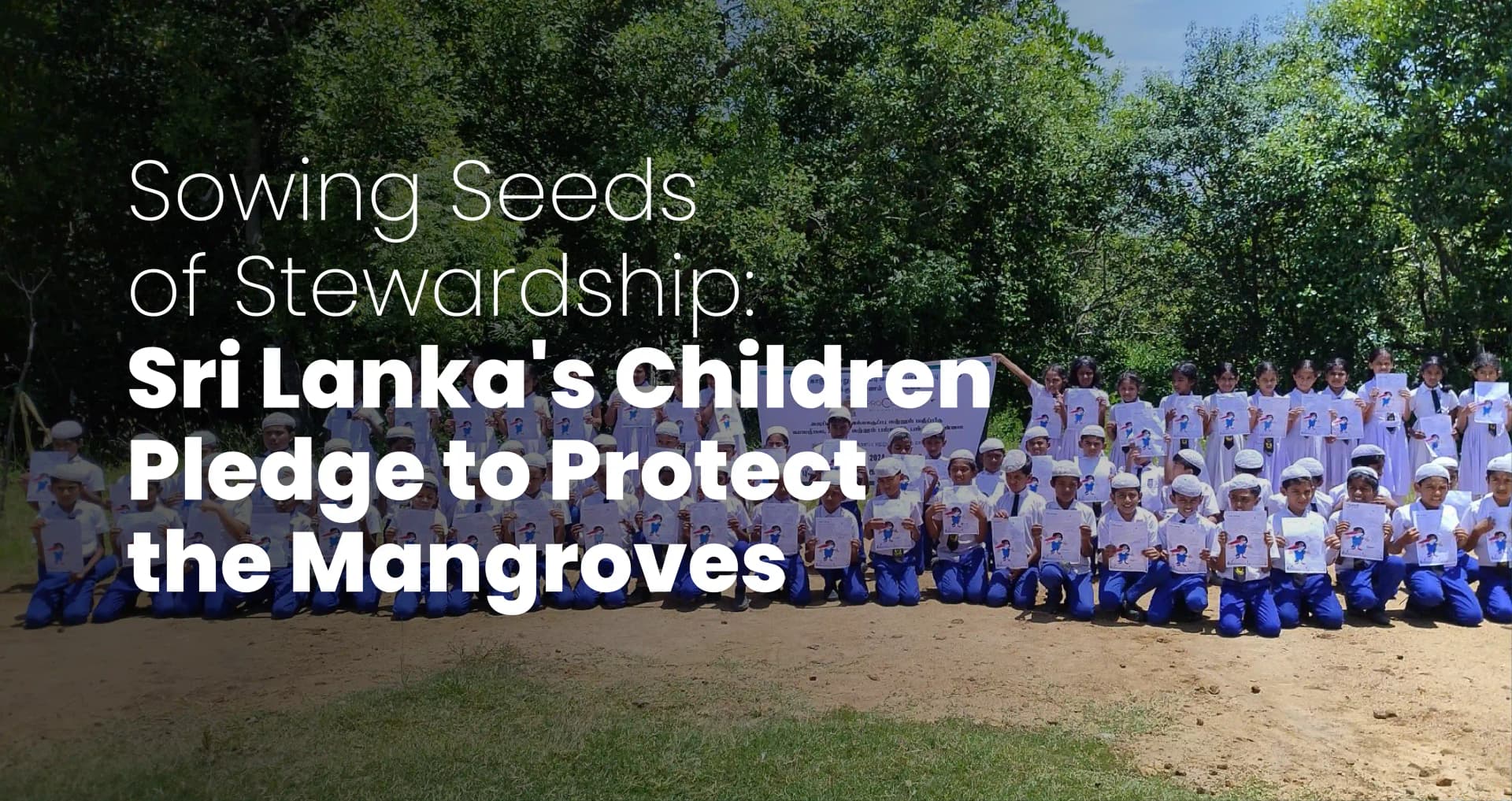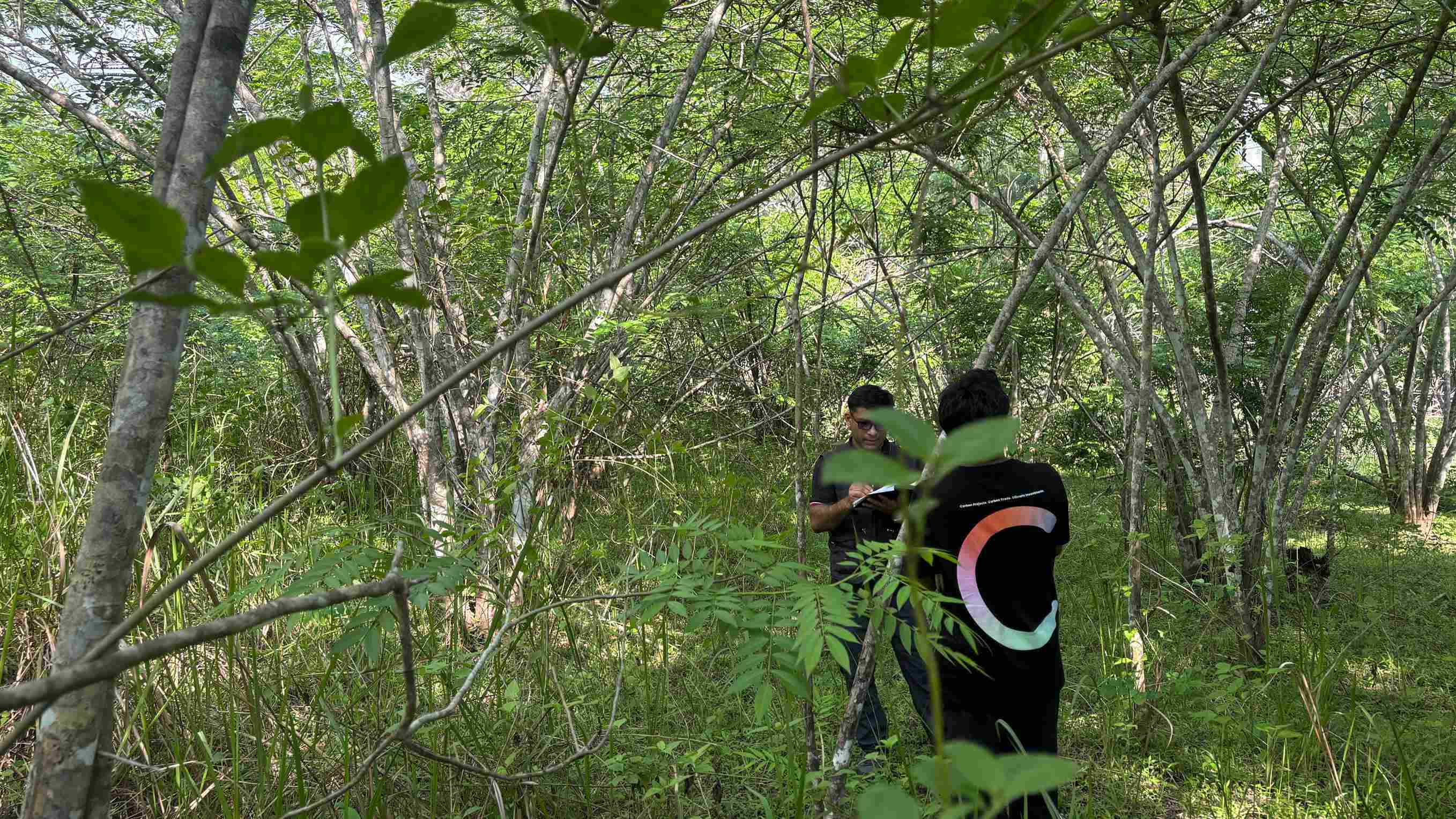Protecting Our Coastal Guardians: Mangrove Restoration in Sri Lanka’s East Coast

On the warmest summer days, as we sit in the centrally cooled comfort of our offices and homes, it’s hard to imagine the need for a defender at our shorelines, much like our naval forces, ready to fight back the threats of climate change, rising sea levels, and coastal calamities. Fortunately, nature already provides her own army: mangroves.
Across coastlines, the lush greenery of mangroves anchors the soil, forming our first line of defence. Mangroves are much more than just trees; they are ancient guardians that thrive at the interface of saltwater and soil. Acting as natural buffers, mangroves shield coastlines from storm surges and erosion. They also capture carbon more effectively than most rainforests. Mangroves are home to entire food webs, supporting everything from shrimp and juvenile fish to songbirds and crocodiles.

Blue Carbon Projects: A profitable approach to restoring mangroves
Blue carbon is carbon captured and stored by coastal and marine ecosystems such as mangroves, salt marshes, and seagrasses. These vibrant habitats play a vital role in decelerating climate change, preserving biodiversity, and strengthening the resilience of local communities. Carbon credits generated from mangrove restoration are highly valued because they have have high permanence as all natural risk possibilities are factored out in the very first place. They deliver high-quality, credible credits by providing substantial environmental co-benefits such as reducing floods, stabilizing shorelines, and supporting rich fisheries.
In blue carbon initiatives, mangroves play a crucial part in bridging the gap between economic opportunity, ecological restoration, and global climate goals. Marine vegetated habitats such as seagrasses salt marshes macroalgae and mangroves cover only 0.2 percent of the ocean surface yet account for about 50 percent of the carbon buried in marine sediments, according to a study. Another important study highlights the significant blue carbon finance potential, estimating that restoring mangroves across 1.10 million hectares could sequester nearly 1 gigaton of CO2 over the next 30 to 35 years and generate approximately 25 billion USD in revenue from the climate market, based on an analysis of 249 restoration projects across 25 countries. Thus, by attracting carbon finance and sustainable investment, these projects create strong incentives to restore and protect these natural resources.
State of Mangroves in Sri Lanka
Sri Lanka, ringed by the ocean, is home to unique, indigenous mangrove species across its shoreline. However, this coastal cover faces immense challenges. In addition to disturbances from human activities, mangroves have suffered the impact of harsh waves, tsunamis, rising sea levels, the COVID-19 pandemic, and ongoing financial difficulties.
Taking a closer look at Sri Lanka’s east coast, previously abundant mangrove ecosystems have been significantly degraded. Since 1996, Sri Lanka has lost nearly 25% of its mangrove cover, according to Global Mangrove Watch. Coastal development, the expansion of shrimp farms, pollution, and the destruction caused by the 2004 Indian Ocean tsunami are all factors that have contributed to this loss.

Restoring to Reap the Benefits
Mangrove forests are vital to both ecological health and local livelihoods. Their dense roots prevent soil erosion, absorb storm surges, and stabilize coastlines. They function as nurseries for fish and marine life, supporting local fisheries which are key provisioning services for coastal communities. Mangroves also sequester large amounts of carbon, helping mitigate climate change. While the economic value of these services is substantial, many of these benefits lack direct market prices and require methods beyond standard economics to be fully recognized.
Recognizing their importance, there has been a renewed focus on restoring mangroves on Sri Lanka’s east coast. This involves government support and active community participation, all with the vision of a climate-resilient world. The carbon market adds another dimension, offering incentives for communities to protect and monitor their mangrove forests.
This initiative goes well beyond simple tree planting; it’s about holistic healing. Native species like Rhizophora, Avicennia, Excoecaria, and Lumnitzera are being used to restore degraded land, rebuild carbon-rich habitats, and re-establish the coastal protections that Sri Lanka has always relied upon. With each sapling planted, the coastline grows stronger.

Restoration Leading to Community Prosperity
Reversing the effects of mangrove degradation not only has environmental benefits but also directly impacts the communities that have historically relied on them for their livelihoods. It’s imperative that mangrove restoration projects have direct participation from the local community. This leads to positive outcomes, such as:
- Sustainable livelihoods like aquaculture and crab farming give local communities new incentives to safeguard their natural environment.
- Education and training that empower residents not just to participate in, but to lead, the restoration process.
- Alternative incomes which encourage communities to become entrepreneurs in blue carbon initiatives.

Through this integrated approach, projects like ProClime’s East Coast Mangroves generate verifiable carbon credits while reinvesting revenues into the ecosystem and its people, creating a cycle of self-sustaining, community-led conservation.
Mangrove restoration is more than a biodiversity or climate intervention; it is a statement of hope. It’s proof that healing is possible, that life can thrive along our coasts, and that resilience can take root, even in the muddiest beginnings.

The Sri Lanka East Coast Mangrove Restoration effort is planting seeds of hope for ecosystems and for future generations, a vision for a world where nature and humanity flourish side by side.
Let’s protect the guardians who have protected us for centuries.

